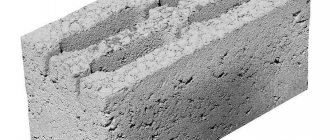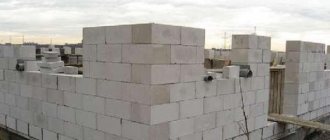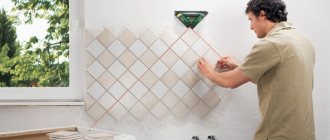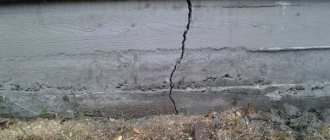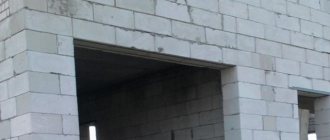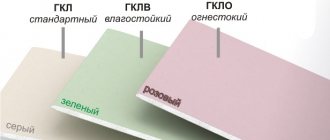- Porous ceramic blocks
Each wall material has its own service life, which is coming to an end. But you can provide yourself and your children with comfortable housing. Warm ceramics - a functional approach to business.
Manufacturers produce wall materials that exceed GOST parameters in terms of strength and frost resistance. Models with a thickness of 380-510 mm are laid without insulation. The insulating properties are sufficient for a stable room temperature.
Porotherm hollow blocks are used for the manufacture of load-bearing walls and interior partitions. Thanks to their porous design, they perfectly maintain the indoor microclimate, keeping them cool in summer and warm in winter. The thermal conductivity of the finished wall is 4-5 times lower than that of a brick wall.
During operation, Porotherm blocks do not change their thermal characteristics. Due to the tongue-and-groove connection, masonry mortar is saved 3.5 times compared to brickwork, and construction is much faster. Due to the low weight, the load on the foundation is reduced, which allows the use of lightweight foundations.
Do you have a plan of 4 main questions? We will find answers to them.
Task No. 1
Build a country house to live in it all your life and pass it on to your children. Solution Buy ceramic blocks for installation of load-bearing walls and interior partitions.
Task No. 2
Do not heat the street.
Execution and formation from 4 environmentally friendly components. Firing with sawdust added to form an intricate line of slotted holes that block out warm air.
Task No. 3
The house is for a construction season, not for 5 years.
Installation Instead of 14 bricks, we lay one porous stone. In addition to the mortar, the products are attached with a tongue and groove method using a snap-on method. The installation speed is increased by 2 times.
Task No. 4
Quiet and calm outside the city - in reality everything is different.
Reduced noise absorption up to 60dB. Execution Load-bearing walls with a sound-reflecting effect. There is no street noise, loud music, or screams in the rooms.
Price of ceramic blocks in Ryazan
If we talk about a porous block in one phrase, it sounds like this. The price corresponds to the characteristics and usability. We'll say more. The cost is less than what you get in return. The installation technology refers to self-sustaining systems. And the price of warm ceramics from the Bricus company brings you closer to making a profit during the heating season.
Are you experiencing financial difficulties?
Pay attention to the “I want it cheaper” bar. Write to us why we personally should sell you cheaper. You can always reach an agreement!
Ceramic block 2NF is a popular, widespread building material. Buying a 2NF ceramic block is usually not a problem, buying a 2NF ceramic block
Today, ceramic block is one of the best wall building materials, which significantly improves the thermal properties of walls and has excellent sound insulation and noise insulation.
Ceramic blocks have been successfully used in construction for more than 30 years. During this time they received well-deserved recognition in the European market.
Ceramic block is not only an excellent material in terms of its technical characteristics, but also significant savings.
NameSizeManufacturerPrice wholesale / UAH. with VAT PHOTOceramic block 380x248x238Keraterm38.80Ceramic block380x230x215Keramcomfort41.60Double brick 2NF250x120x138SBK "Ozera"5.49
Main characteristics
The main criteria are:
- strength;
— thermal insulation qualities;
— ease of processing and installation;
- durability.
A ceramic porous block has these requirements, similar to classic brick. Its development was carried out back in the last century in the 70-80s, when the construction market experienced a shortage of materials. The new development was immediately put into production, since its properties met the requirements and standards of SNiP. The advantageous characteristics and durability of the blocks have already been appreciated by hundreds of thousands of people.
Ceramic blocks – warmth and reliability of your home.
Ceramic blocks (warm ceramics) are one of the popular materials on the construction market today.
What is the reason for this and what explains such success - we will try to answer these questions in our article. First, let's define what a ceramic block is and what it is made of. As the name suggests, the material for making such blocks is building ceramics.
Ceramic products are products that are made by molding and firing clay.
Artificial stone materials made from ceramics are divided into 2 groups based on density: dense and porous. Dense building materials can absorb up to 6% of water from their mass, while porous ones - from 6 to 20%. Building ceramics are used to make wall and roofing materials, for internal and external cladding, materials for ceilings, floors, etc.
Based on technological use, they are all divided into 2 classes. The first includes the so-called brick walls, which form vertical layers of ceramic products. In cases where it is possible to build a single-layer wall, which in the future will only require finishing work, large-format ceramic blocks are used.
The raw materials for the production of ceramic blocks are fusible clays, which provide high technical characteristics of the building material, its durability and environmental friendliness. During the preparation of raw materials, crushed sawdust is added to the finished mass, which burns out during firing, leaving micropores filled with air inside the product. One ceramic block accounts for up to 25% of such air micropores of the total volume.
Hollow blocks have a density of up to 830 kg/m3, and also have unique heat and sound insulation properties. Porous ceramic blocks are used for the construction of both internal, load-bearing and external walls.
Types of brick products and their standard sizes
The dimensions of brick products depend not only on the standard size, but also on the type of building material. The main types in demand in the construction of residential buildings and the construction of industrial buildings are:
- Red brick;
- silicate;
- facing.
Red building blocks and their features
Red brick is a universal-purpose building material used for the construction of foundations, external enclosing structures and partitions in the house, and fences.
Red brick products are made from clay briquettes, which are pressed by firing. The dimensions and technical characteristics of the product are regulated by GOST 530-2007 and are (in millimeters):
- standard format – 250x120x65;
- thickened format – 250x120x88;
- double format – 250x120x138.
In addition to the popular standard sizes by GOST, less popular formats are also provided:
- 0.7 NF with parameters 250x85x65 mm;
- 1.3 NF with parameters 288x138x65 mm.
Building materials of the “European format” are used for decorative finishing of windows and other structural elements of the facade.
Sand-lime brick
Silicate brick blocks are a building material made on the basis of silicate, intended for the construction of load-bearing external walls and partitions in the house. The modular dimensions of white brick are 250x120x65 and 250x120x88 millimeters.
Silicate building blocks are produced in two types:
- full-bodied;
- hollow.
The void volumes of the silicate block, as well as the overall dimensions, are adjustable
state standards. Hollow silicate blocks are divided based on the volume fraction, diameter and number of blind voids having a cylindrical shape.
The following types of hollow sesquisilicates are distinguished:
- three hollow – the proportion of voids is 15% of the volume of the product, the diameter of blind holes is 52 mm;
- eleven are hollow – the proportion of voids in the total volume is 25%, diameter – from 27 to 32 mm;
- fourteen hollow - the proportion of voids varies from 28 to 31%, the diameter can be from 27 to 32 mm.
Facing brick
For facing facades, standard size facing bricks are used, which corresponds to the traditional counterpart.
The construction market offers several types of cladding products:
- clinker;
- ceramic;
- hyperpressed;
- silicate.
Clinker building blocks are used for finishing facades, for erecting decorative pillars, decorating window openings, and using this type of material to build arched windows. The material is characterized by a dense, smooth structure, excellent sound-insulating and frost-resistant qualities, is resistant to moisture, and retains heat well. Clinker can be colored and glazed, glossy and matte. Windows and facade walls faced with clinker blocks retain an attractive appearance for a long time.
Clinker facing
Ceramic facing products can withstand up to one hundred changes in natural seasons; the material is not afraid of sudden temperature changes. Brick retains its original qualities and appearance over a long period of use.
Ceramic veneer
Hyper-pressed material is made from a lime-cement mixture using the method of semi-dry hyper-pressing, followed by steam treatment. The material is used for decorative finishing of facades; it is used to highlight windows and doors. There are several types of facing material:
- smooth;
- spoon;
- figured;
- angular.
The standard dimensions of smooth and figured hyperpressed bricks are 250x120x65 mm. Standard spoon bricks have parameters of 250x85x65 mm, corner and narrow spoon bricks – 250x60x56 mm.
Hyperpressed facing
Sand-lime facing brick is an environmentally friendly frost-resistant material. Facing sand-lime brick amazes with its variety of colors; it differs from its ceramic counterpart in its uniform color tone over the entire area of the product. Silicate facade material is not used for cladding areas in contact with the ground.
Main technical characteristics of ceramic blocks:
– Environmental friendliness of porous ceramic blocks, which are produced from completely natural raw materials – clay.
– Excellent heat and sound insulation, which is achieved due to the presence of air space in the micropores of the building material and closed voids that exceed the solidity of the total ceramic mass. Thus, the heat and sound insulation characteristics of ceramic blocks are 3 or even 4 times higher than those of ordinary bricks.
– High speed and ease of wall laying due to the low weight of ceramic blocks (they are 2 times lighter than brick) with impressive dimensions. Ceramic blocks have a tongue-and-groove connection, which allows masons to reduce errors to a minimum.
– Comfort and coziness of the home, which is achieved due to the fact that the walls of ceramic blocks can “breathe”, thereby maintaining optimal air humidity in the room.
– Savings, firstly, on mortar when laying, because with large sizes of the ceramic blocks themselves, 3 times less mortar is consumed than when laying walls from the same brick; secondly, the light weight of the blocks can significantly reduce the load on the foundation, and therefore make it less expensive.
There are many different possibilities for achieving the required heat-saving effect of the building envelope by combining different building materials.
Thanks to the rational arrangement of voids, the ceramic block has exceptionally high thermal insulation characteristics, which make it possible to abandon additional expensive thermal insulation systems and build a wall only from blocks. At the same time, the thickness of the wall is significantly reduced compared to a wall made of ordinary bricks. The lighter weight of the walls leads to a simplified foundation design, which also provides the opportunity for significant cost savings.
The volume of a ceramic block is approximately 10-15 bricks of a regular format. At the same time, the block, thanks to its high and reasonable hollowness, remains light in weight and simple in masonry technology.
This means that the pace of masonry increases, and the construction time decreases by at least 3-5 times. In addition, the tray sides of the block are made in a special ribbed shape, so that masonry mortar is not required in the butt joints. Result: the large format of the block and the absence of butt seams make it possible to reduce mortar consumption by 3-4 times.
High strength.
With all the new advantages, the ceramic block retains the stability and strength of ordinary bricks. Modern technology makes it possible to achieve a balanced combination of low thermal conductivity and high “quality”: with a material λ of 0.21 W/mS, the compressive strength is 150 kg/cm2.
Increased soundproofing.
Ceramic block, in addition to high thermal insulation, also has excellent sound insulation characteristics. The sound insulation coefficient of a block wall is min 51 dB.
Absolutely environmentally friendly.
The block, being a material made of clay, is an absolutely environmentally friendly product that does not contain any harmful impurities.
Ceramics and the optimal pattern of voids, creating optimal moisture and heat exchange, allow a wall made of blocks to “breathe”. The surface of a wall made of ceramic blocks remains dry at any time of the year. There is no likelihood of mold and mildew forming, and a healthy temperature and humidity microclimate is created in the room.
Dimensional accuracy and compatibility with normal format bricks.
Reliable German equipment uninterruptedly ensures perfect accuracy in the set block format, which allows you to accurately build a wall from blocks. The height of the blocks is such that it corresponds to the height of three normal format bricks and can be faced with traditional bricks without any problems.
Optimal base for plaster.
The corrugated surface of the block makes it easy, quick and economical to apply plaster: 1.5-1.7 times less plaster is used per 1 m2 than on a wall made of ordinary brick.
A wide range of products makes it possible to construct walls from a homogeneous material. When using a ceramic lintel instead of a traditional reinforced concrete one, we obtain a wall with a uniform surface. This means solving several construction problems at once: eliminating cold bridges, eliminating shrinkage cracks and cracks in plaster.
Double brick is especially often used by large construction organizations, although practical owners of individual houses also use modern achievements. The NF index denotes how many analogues of normal sizes the block replaces.
In prefabricated buildings, it is practiced to use double stone. Estimated calculations show that this building material makes it possible to achieve significant savings during construction.
Let us compare in numbers the number of ceramic products per meter of masonry height.
It turns out that 6 double bricks are needed, and 13 single bricks. The numbers speak for themselves. Using the first allows the master to lay out about 8 cubic meters of masonry in one shift.
High durability and strength allow structures made from this material to be used for a long time. The use of double brick (2 NF) allows you to create houses that are comfortable at any time of the year.
Our consumers were able to appreciate the quality of our products.
Double slotted bricks can be used for the construction of structures of any type, in industrial, commercial, and residential buildings, without extra costs for insulation. Purchase building materials made in accordance with government regulations and standards. All products offered by the company have passed mandatory certification and meet modern safety and environmental requirements.
Having technical characteristics similar to single and one-and-a-half bricks, the double brick (2 NF) has increased dimensions. "Trading house K.S.M." produces and sells building materials at competitive prices.
Product grades: M 100, M 150 - characterize strength (the taller the building, the higher the value).
A special feature of double bricks are special voids. They allow you to achieve improved sound and heat insulation. At the same time, using double slotted bricks you can significantly save on wall thickness without losing the load-bearing properties of the structure.
Modern high-tech equipment allows us to produce products that are different in shape and size of internal voids. Their texture may also be different. Each manufacturer develops its own designs, types of clay and additives for production.
The methods for producing slotted bricks are also different. One involves firing pre-prepared clay with a moisture content of 17–30%. And the other differs in that the raw material is prepared in advance from a clay mass, the amount of moisture in which is 8–10%.
The second name of the product is double stone, its dimensions are 250 x 120 x 140 mm, although the weight differs slightly from conventional bricks. This is achieved due to voids.
Large sizes allow you to speed up the building construction process and significantly save on mortar. Double slotted ceramic bricks were brought to uniform standards in Russia relatively recently. Abroad they use completely different sizes.
To make ceramic blocks, the same red clay is used as for ordinary masonry bricks. Their main difference is in size and raw materials.
To produce ceramic blocks, fine sawdust is added to the clay. After the green blocks are shaped, they are fired. As a result of this operation, the sawdust burns out, and the clay becomes more like stone.
At the end of the processing, a durable wall block with good heat-insulating properties is obtained. The weight of the ceramic block is significantly reduced due to the formation of slot voids. The figure can reach up to 50%. The dimensions of the ceramic block are much larger than those of ordinary bricks, so the labor intensity of the work is reduced several times.
The characteristics of ceramic blocks largely depend on the design of the building and the presence of wall insulation. Since porous ceramic blocks come in different sizes, hence the characteristics will vary. In order to have an initial idea about them, you can consider the features of a single-layer wall with minimal finishing.
Ceramic blocks have the following characteristics:
Low thermal conductivity. It is ensured by the presence of voids and pores that have a melted surface and a closed volume. Thermal inertness. A single-layer wall made of ceramic blocks does not require insulation, the structure of the material is such that it maintains both thermal and air balance in the room. Easy to construct. Since Ceramic blocks are large in size, and accordingly, wall laying takes place at a high work pace. Ceramic blocks are distinguished by their durability in use.
In comparison with brick, the service life of which ranges from 25 to 50 years, ceramic blocks are just beginning their countdown at 50 years old. Ceramic blocks have a large format. As a result, the construction process is simplified and accelerated - laying one ceramic block replaces laying 15 conventional bricks. The sizes of porous and face blocks do not vary very much and often depend on the manufacturer and the characteristics of production. Small weight of construction material.
Ceramic blocks do not weigh down the structure and do not create additional load on the foundation. Cost-effective. Although the mortar used for masonry is prepared in the usual way, much less of it is required. For example, a tongue-and-groove joint is not filled with mortar at all, which also results in savings. Good sound insulation. The structure of ceramic blocks is such that there are chambers in the voids that improve the soundproofing properties of the building material. Ceramic blocks are absolutely non-flammable. When exposed to fire, they do not emit any harmful substances. Environmental friendliness. Since only natural components are used to make porous ceramic blocks, they are safe for the human body.
Main characteristics of ceramic blocks
Dimensions and markings of a brick block
Brick block has been used as a building material since the dawn of time.
In history, there are examples of bricks that were found 10 thousand years ago. It is assumed that people built houses from rectangular clay casts, which were first dried in the sun.
Houses built from such casts quickly collapsed, so the ancestors came up with the idea of firing ready-made brick blocks, which significantly strengthened their structure. For many centuries, rectangular casts did not have a specific generally accepted shape and varied greatly in size. In order to build reliable fortifications to protect large cities, certain size standards were introduced.
Building brick drawing.
These standards changed frequently as innovative ideas emerged over a period of time to help strengthen buildings and simplify the construction process. Thanks to this, modern historians determine the era in which a specific building was erected. Thus, by now, standards in the size of a brick block have reached their perfection, and changing them can affect many details during the construction of structures.
To build a specific building, you first need to understand all the existing brick sizes. This data will help you choose the blocks that are most suitable for the future structure. In addition, the size also affects the method of laying the brick block.
Brick is a stone with a strong structure and precise shape, which is made artificially. It is widely used in construction work. Brick blocks have 3 surfaces, which have symbols:
- bed - the most voluminous; spoon - medium volume; end - the smallest in volume.
The current standards were defined back in the days of the Soviet Union. They are indicated in a specific section of GOST, where the size of building materials is indicated.
In accordance with the accepted norm, some discrepancies in the size of the brick are allowed, since the block laying procedure involves shrinkage. The discrepancy in size must be within the following limits:
- length ± 0.5 cm, width ± 0.4 cm, thickness ± 0.3 cm; unevenness of edge and corner parts - 0.3 cm (bed) and 0.4 cm (spoon); cracks through and through at the end and spoon corners should be no more than 30 mm in length.
Types of facing bricks.
Any building material has its own parameters, which primarily affect their reliability and quality.
For bricks, this parameter is also its size, which does not affect its use for specific purposes. This factor is important only for the formation of the correct dressing during the laying process. Depending on the size, bricks are designated as follows:
- single; one and a half; double; European; block.
Return to contents
Advantages of ceramic blocks
Since the labor intensity of a mason’s work with brick is obvious, laying walls from a ceramic block saves not only the worker’s effort, but also his time. Ceramic blocks have good energy-saving properties. With their thermal insulation coefficient of 0.018 - 0.22 W/m, it will be sufficient to lay external walls with a thickness of 0.4 meters or more. Ceramic blocks are suitable for the construction of interior partitions. This is the optimal solution in apartment buildings, as they successfully absorb sound. The density of ceramic blocks is comparable to the density of dry wood.
It ranges from 750 to 850 kg/m. The weight is accordingly also less compared to conventional masonry bricks. These parameters make it possible to “lighten” the structure and do not require laying a powerful foundation. Porous ceramic blocks have high vapor permeability, so the humidity in the room is naturally regulated. The use of ceramic blocks for the construction of a building significantly speeds up the process, while saving the solution reaches 15-20%.
Types of masonry depending on the size of the brick
Types of masonry brick walls.
The dressing of the masonry is directly related to the standard shape and modular dimensions of the brick used. And the width and height of the structure being built depend on the laying method of the selected building material. There are several such methods:
- end - when laying stones, their end part is directed upward; spoon - the building material is placed with the spoon part up; combined - both methods alternate through a row.
The size of the masonry is also determined by the size of the joint between the stones. They come in the following varieties:
- undercut - the cement mortar is at the same height as the surface of the stone; empty joint - the mixture extends beyond the surface of the brick block; inward jointing - the mortar in the joints is corrected with a special device that gives the seams a concave shape; outward jointing - joints are created from the cement mixture in the area of the seams convex shape.
The joints have their own conventional dimensions. If you take masonry seams horizontally, you must maintain a joint size of 1 cm with a possible discrepancy within ± 0.2 cm.
Vertical rows are laid out with a joint width of 1.2 cm. In this case, the initial seam size can be chosen as 1 cm or 1.5 cm. Deviations must be within these parameters.
When creating a certain type of dressing, you must first focus on the type of structure and the size of the stone used for its construction.
Dressings are divided into multi-row and single-row. The first type involves laying out one row using the end method, and the next four using the spoon method.
This method is also called stepwise. The second type involves laying with alternating end and spoon methods in one row. This method is called chain.
To create a reliable connection between thin-layer brick structures and thick walls, the following dimensions are observed: the protrusion of the brick groove is 12 cm, the size of the groove is 14 cm. When combining masonry with conventional structures, the size of the groove is 8.5 cm, where 6.5 cm is allocated for the stone , and 2 cm for joints. When breaking with a vertical bar, the groove should be 6 cm.
When laying out particularly thick structures using the chain method (for example, half-meter walls), the main brick row is laid on its end, and subsequent ones alternate with a spoon and an end.
In designs of 1.5 and 2.5 stones, the main row is placed with a spoon, and the next row is placed with the end. Laying out brick blocks using the chain method involves using ?, ? and solid stone.
Auxiliary table for calculating bricks for building a house.
The size of the structure being built also depends on the amount of cement mixture that is used during its construction. In the case of spoon laying, the thickness of the layer at the joints is 0.8-1 cm, for the end these figures are within 2-2.2 cm.
The layer of cement bed is 1.5-2 cm thick. Despite the permissible deviations, it is important to maintain the same selected size. This will help build a strong and reliable structure that will withstand any mechanical and natural influences.
Methods for laying out a brick block should be adjusted depending on the modular dimensions of the building material used.
Among them there are such varieties as brick, small-block, plank, rubble, and large-block stones. It is worth remembering that facing types of bricks are used only in the masonry of the facade of the building. The internal part should be built on the basis of cheaper but reliable building materials.
As a rule, standard sizes approved by GOST are available only for simple bricks (red ceramic and silicate). If stone made from other materials is used to construct walls, its compliance with standard dimensions is not guaranteed. Therefore, the size of the joints and the masonry method should be selected based on the approximate correspondence of the existing size to the dimensions specified in GOST.
Return to contents
Disadvantages of ceramic blocks
With all their positive properties, ceramic blocks also have significant disadvantages that you should pay attention to:
Since ceramic blocks have a slotted structure, their thin walls are very fragile. Particular attention should be paid to careful loading, unloading and transportation of this building material. Porous ceramic blocks tend to actively absorb moisture, so they should be laid in such a way that they are protected from groundwater.
Ceramic blocks should also be protected from atmospheric precipitation during storage. A fairly high percentage of strength indicated by the manufacturer does not guarantee that it is such. When laying ceramic blocks, it is better to play it safe and take material with higher performance, since laboratory studies have shown that the brand in the certificate does not always correspond to the actual one. In order to protect yourself 100%, you can take ceramic blocks to a construction laboratory to determine their quality.
Other types of brick blocks
In addition to generally accepted standards, there are modular single stones measuring 28.8 x 13.8 x 6.5 cm. In GOST they are marked as 1,3-NF. At the same time, the market provides ceramic porous stones measuring 25x12x14 cm.
There are also large stones with the same structure, which are offered in the following sizes:
- 10.7-NF – 38?25?21.9 cm; 14.3-NF – 25?51?21.9 cm; PTH-8 – 8?50?21.9 cm; PTH-12 – 12?50 ?21.9 cm;PTH-25 – 25?38?21.9 cm;PTH-38 – 38?25?21.9 cm;PTH-44 – 44?25?21.9 cm;PTH-51 – 51 ?25?21.9 cm.
Return to contents





